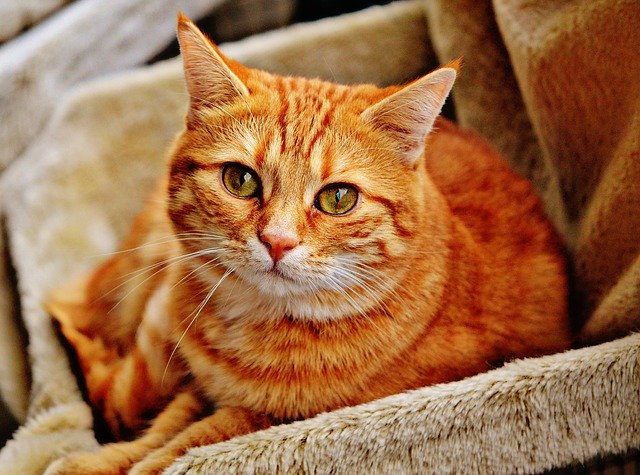Wet food can make an excellent treat for cats! You can add a spoonful of wet food to encourage your cat to eat their dry food or hide medication in a bit of pate. However, wet food should be a central part of your cat’s diet, and incorporating more canned food will benefit your cat’s health in various ways.
So, can I give my cat wet food as a treat? Yes, of course—but your cat will thank you if you feed them wet food on the regular! The rest of this article will discuss the benefits of wet food for cats and how to give cats medication with wet food.
What are the benefits of wet cat food?
Wet food is beneficial to cats for a variety of reasons! It boasts higher protein content, higher water content, and better weight control. To reap the benefits of both wet and dry food, it’s ideal to feed your cat 75-80% wet food and 25-20% dry food.
Water content
Wet cat food has a very high water content, which has excellent health benefits for your cat. Since cats don’t drink much water, their hydration should be supplemented through their diet. Dry food contains a very low percentage of water, so wet food is the way to go!
Why is hydration important? Adequate hydration is essential for preventing urinary problems in cats by keeping their bladder, urinary tract, and kidneys healthy. Cats who do not receive sufficient hydration are at a higher risk for bladder or kidney stones, increased burden on their kidneys, and urinary tract infections.
Male cats are especially at risk for urinary blockages—a condition that can quickly become fatal. Adequate hydration is essential to preventing urinary blockage, making wet food an excellent choice for male cats.
Protein content
Cats are obligate carnivores, meaning they require a larger ratio of proteins in their diet. Dry food has increased carbohydrates compared to wet food, which has a much better protein content for your cat. Higher amounts of carbohydrates can easily lead to weight gain, so feeding more protein and fewer carbs is an ideal way to keep your cat healthy.
Weight control
In relation to the previous point, cats are built for high protein intake with fewer carbohydrates. Because dry food contains a higher percentage of carbohydrates when compared to wet food, cats fed only dry food are at a higher risk for weight gain, which can lead to increased risk for health conditions like diabetes, joint problems, and heart issues.
Additionally, ingesting a heavier carbohydrate load can be very addictive for kitties. Some cats on a dry food diet will never eat wet food, which can be detrimental to their health in later stages of life when medically-formulated wet foods may be the best diet to treat chronic health conditions like kidney disease or diabetes.
How can I give my cat medicine in wet food?
It’s tough to give cat pills. Powdered medications are often easier, but you want to make sure you know your cat actually ate it! So what are some methods for delivering medicines to your cat in food?
Medicate your cat before feeding
If you have to give your cat a pill or powdered medication in food, put the medicine in a small bite of wet food before you feed your cat their regular meal. This way, your cat will be hungry and is much more likely to take the medicine.
You can also easily visualize if your cat actually ate the pill, which can be difficult if you give the medicine in your cat’s entire portion of food.
Use a special food
If your cat normally eats pate, try to give meds in a stew! You can also try other brands or flavors of wet food as a special treat to entice your cat to take their medicine, treating it as a reward. This also keeps it new and exciting every time, as cats, especially those with chronic medical conditions, can quickly tire of certain foods, making it challenging to medicate them.
Warm it up
Most cats don’t like to eat cold food, so when you’re taking that half-empty can out of the fridge, it’s not particularly appetizing to your kitty! If you’re giving medication and want to make sure your cat eats it, it can be a great idea to warm up the canned food in the microwave for a few seconds before adding the medication!
Be sure to use caution when microwaving cat food, as it can become too dry or too hot if left in the microwave for more than a few seconds. Always check the temperature before serving your cat!
Is wet food bad for my cat’s teeth?
This is a concern many owners have, and it’s totally valid! While some cats may require a wet-only diet to treat certain medical conditions like kidney disease, most cats benefit from a mix of wet and dry food in their lives.
Specially formulated dry dental diets can help keep your cat’s teeth clean! You can find these larger kibbles at your local pet store or veterinary clinic. Due to the size and make of the kibble, the action of chewing them helps clean plaque off your cat’s teeth. However, even when feeding a dental diet, I would still recommend your cat’s diet consisting of mostly wet food.
If you’re concerned about your cat’s dental health when they’re not getting the cleaning action from their diet, you can try brushing your cat’s teeth with pet toothpaste and gauze or a finger brush. This might be a process, so go slow and steady with treats until your cat gets used to it! If you need any more tips or assistance, ask your veterinarian for help.
[su_box title=”Affiliate Disclosure”]This website is supported by its readers. Please assume that all links are affiliate links. If you make a purchase from one of the links we will make a commission from Amazon. Thank you.[/su_box]




